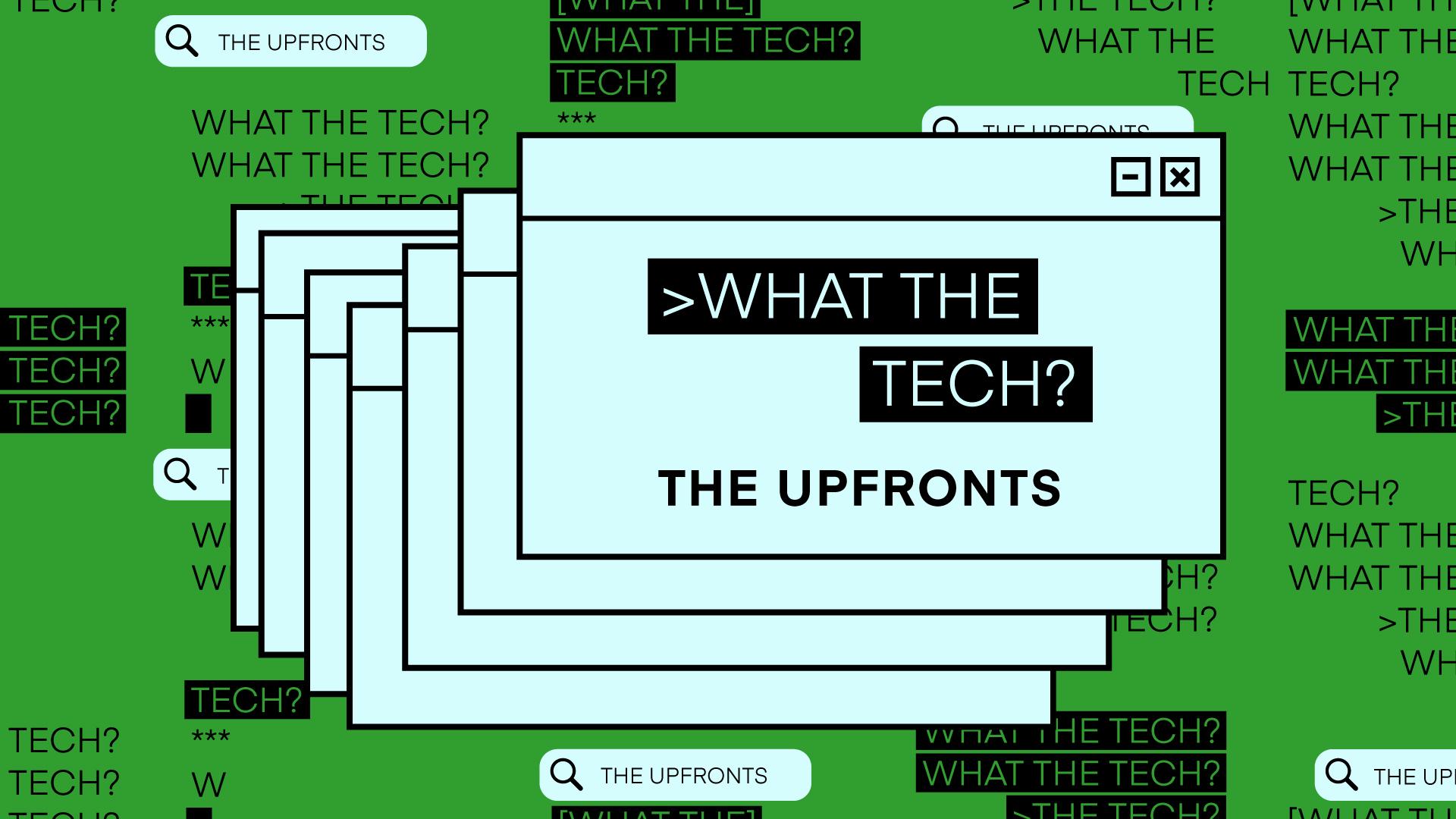What the Tech is up with the upfronts?
Explaining the most exciting two weeks in the advertising industry.

It’s finally here! The most exciting season in marketing!
No, not the Super Bowl, although that is the proverbial big game for brands and agencies, especially for creatives hoping to be immortalized as advertising geniuses.
In a few weeks, ad buyers, agency folks and ad tech whizzes will descend upon live venues across Manhattan for the upfronts, an annual sell-off of all the hottest real estate the advertising world has to offer.
The upfronts — both in their traditional TV format, and in their more contemporary digital format — are an annual ritual for the ad industry, but for a newcomer they can appear daunting, if not a tad inscrutable. Luckily, we’re here to guide you through.
What is an “upfront?"
An upfront is when a TV network or an internet publisher hosts an event showcasing its new content for the year. The hope is the event will drum up interest among advertising buyers, who will then cut a fat check to advertise against the network’s or publisher’s content. All the major TV networks and web publishers host one, and it’s generally a rollicking good time.
If nothing else, the upfronts are a good opportunity to see some stars. In 2019, the last year upfronts were held in person, Fox, for instance, trotted out the cast to 90210, sportscaster Joe Buck, all-time baseball great Alex Rodriguez, Masked Singer judge Jenny McCarthy, actor Jason Biggs, WWE and action film star John Cena, comedienne Amy Poehler, Hall of Fame quarterback turned broadcaster Terry Bradshaw, actor Rob Lowe, actor Stephen Dorff, John Slattery (Roger in Mad Men) and Justin Timberlake at its event.
Why do we have them?
The upfronts go back a ways. In fact, the first upfront was in 1962, hosted by ABC.
Decades ago, back when TV was the most important medium in advertising, the upfronts were vital for securing ad deals. New TV shows generally came out in the fall, but TV networks would host upfronts in the spring in the hopes of securing ad deals for their shows ahead of time.
TV networks would unveil their slates of programming — “NBC’s Must See TV: Friends, Seinfeld and ER, all on Thursday night!” — in big, showy live events. Many times, the TV networks would even book iconic performance venues, such as Radio City Music Hall, for the events.
Ad buyers in attendance would get excited about certain shows and buy commercial slots months in advance. That is, the deals were made up front.
So all of the deals are done in one day? Intense.
Not quite. It can take networks weeks, months even, to sell off all their upfront inventory. The upfronts are more of a starting point for negotiations with ad buyers.
Why sell the advertising ahead of time?
An upfront functions as a classic futures market. Sellers are able to lock in revenue ahead of time instead of sweating it out to the end, wondering if they’ll be able to get a good price, or if they’ll be able to sell their goods at all. Buyers, meanwhile, are able to lock in a deal months ahead of time instead of scrambling at the last minute and getting price gouged.
In TV terms, the upfronts gave networks a good idea of how much ad revenue it stood to make off each of its shows. For agencies, the upfront allowed them to secure prime ad placement for their clients. Upfronts give both parties peace of mind.
Same thing for web publishers hosting upfronts and the ad buyers who attend those events.
How have they changed?
For one, the upfronts are no longer strictly about TV. In 2008, digital advertising agency Digitas hosted the first NewFront, an upfront focused specifically on digital media. It didn’t take long for other digital media companies to follow suit. Soon, every major digital media company was hosting an upfront, using the occasion to display all its shiny new goods to thousands of eager media buyers. In 2013, AOL hosted the first programmatic upfront. Exciting!
But the upfronts have also changed to reflect an even bigger change in the media landscape, which is that upfronts, for all their glitz and glamor, aren’t really about securing ad deals.
How so?
Because we don’t buy media that way anymore.
Advertising deals used to be forged over a steak and a firm handshake, but increasingly, media is purchased programmatically — even TV. Increasingly advertisers want to know how their investments perform, to measure and compare ad performance across channels. And they want more of that agility built into their upfront decisions.
In addition, the idea of a media company being strictly TV or strictly digital is also a bit of a dated notion. The upfronts return this year after a two-year hiatus because of the pandemic, and Disney announced it will hold its event at Pier 36 on the Lower East Side. Disney, a company that owns a litany of properties across a wide range of media — everything from traditional TV, to blockbuster movies, to streaming, to apps — can’t be described as a movie studio or a TV network. It’s a sprawling media entity, and its upfront will reflect that scope.
Given these two macro changes in the media industry, the upfronts are not simply the marketplaces they once were. Rather, in some ways they also function as marketing platforms for the companies that host them.
Subscribe to The Current
Each week, The Current gives you a rundown of the biggest stories and latest trends from the world of data-driven marketing, including topics like Connected TV and the future of identity — all delivered directly to your inbox.